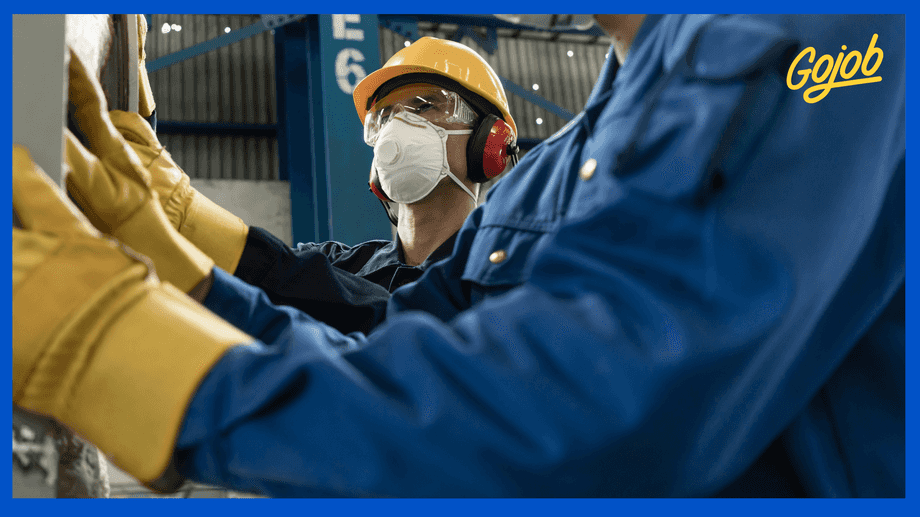
Addressing Employee Safety Concerns with technology
Employees, especially those working on site, have a number of safety concerns these days related to lingering pandemic risks and a rise in violence around the country. But these relatively rare risks pale in comparison to the on-the-job safety risks that blue collar workers are exposed to on a daily basis.Understanding the risks, knowing how to take steps to minimize them, and knowing how to work safely to protect themselves, their coworkers, their customers, and others is critical and ongoing.
Risks vary by company and position underscoring the need for companies to fully comprehend where employee safety may be impacted in their organizations and work settings.
Understanding Impacts and Implications
As Teri Shern, cofounder of Conex Boxes shares: “Creating our containers involves a lot of machinery, some of it potentially dangerous if we aren’t careful.” Because of this, she says, the company makes employee safety a priority. They’ve taken some very specific steps to protect the safety of their employees:
- Identifying the various risks within business and within the warehouse. “This meant a deep analysis of the machinery used, the setup of the warehouse, safety protocols, and much more,” Shern says.
- Creating a structure for a safety plan.
- Making sure employees knew about the different risks and safety procedures.
- Keeping a close eye on the different procedures that are taking place.
- Getting ongoing and frequent feedback from employees.
- Making adjustments when new technology/machinery is introduced.
That same process can be used by other organizations to identify potential risks and the type of education and training, and ongoing communication, that can be leveraged to minimize or eliminate that risk.
Training on Gestures and Postures
While manufacturing environments and blue collar jobs have safety risks associated with equipment and machinery, there are also safety risks associated with employees’ own movements and actions. Providing training to help inform and educate them about, for instance, how their posture or certain gestures could impact their own or other others’ safety is important.
Training on Machines
Employees should be thoroughly trained on the use of any equipment or tools they will need to do their jobs—both how to use that equipment and the potential risks the equipment might present. Equipment should be inspected regularly to ensure its safe operation.
In addition, employees should be provided with and required to wear appropriate safety or Personal Protective Equipment (PPE) such as gloves or safety shoes.
In addition to training designed to ensure employees know how to use machinery and equipment safely, it’s important to help employees be aware of other risks.
Risk Prevention
Every organization will have unique risks. Being aware of those risks, and educating employees about them, is important to ensure their ongoing safety.
From a job performance perspective risks might be related to mechanical or equipment concerns, the presence of toxic chemicals or the use of hazardous electrical equipment, to name some common risks in manufacturing settings. Other workplace safety risks may also exist and should be considered and addressed.
Training may take a variety of forms from general safety awareness, to training on the use of specific machines and tools, to building awareness of risk prevention. Gojob provides all of this training for its customers and makes information accessible to employees wherever they may be on a 24/7/365 basis. With more than 600 online courses designed to train, test and onboard workers to a new assignment or role, Gojob covers all of the bases. In addition, Gojob can deliver client-specific training to address the unique needs of employers.
Training is crucial, says Timothy A. Dimoff, CPP, founder and president of SACS Consulting, Inc., a high-risk and HR security firm. In addition to training specific to the workplace environment and role, he suggests “training for both management and employees on active shooters; workplace violence; and how to recognize, deal with and defuse difficult people.”
Shern agrees. “Half of keeping your employees safe is making sure they’re aware of the risks,” Shern says.
Situational Awareness
Employers can also take steps to help employees stay safe in settings outside of work, Dimoff says. “An important step employers can take is to provide all employees situational awareness training for personal protection including leaving their homes, coming to work, being out in general public, shopping, parking, participating in social events, etc.,” he says.
“A positive company culture is also key,” Dimoff says. “Responding promptly to any and all employee concerns is important to making sure employees feel heard and understood.”
Ready to learn more about how Gojob can be your partner in protecting employee safety?